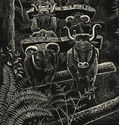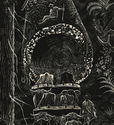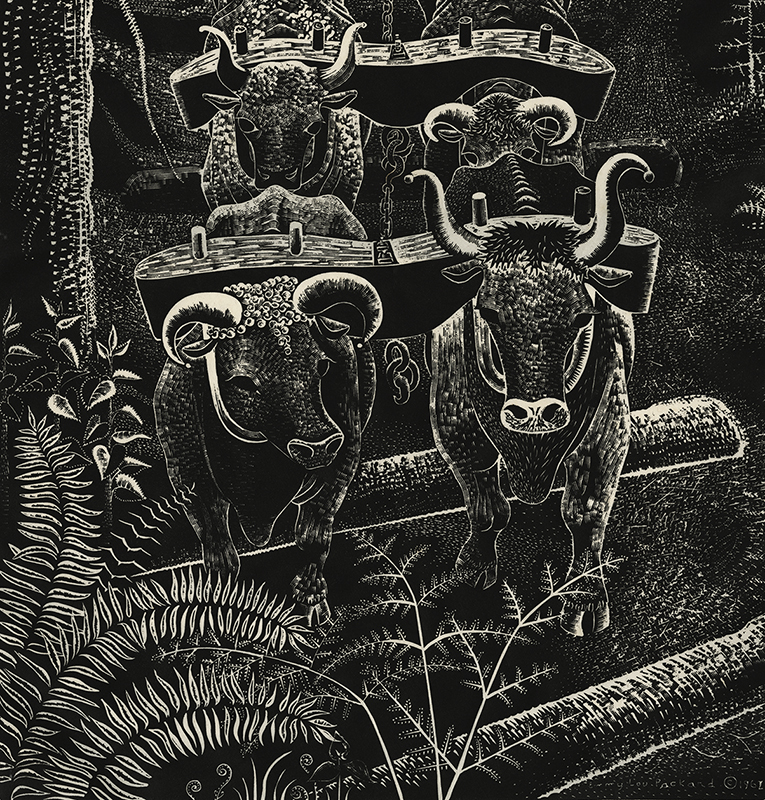
19th, 20th & 21st Century Fine Prints
707-546-7352 · fax 707-546-7924 · web: www.annexgalleries.com · email: artannex@aol.com
Logging in Mendocino, 1870 by Emmy Lou Packard




Logging in Mendocino, 1870
Emmy Lou Packard
Logging in Mendocino, 1870
Emmy Lou Packard
1914 - 1998 (biography)Emmy Lou Packard did this large, 6 foot linocut in 1962 and did a second printing in 1967. The block was printed on 3 sheets of Japanese paper, glued together. The image has become one of her signature Mendocino prints. She wrote an account explaining the composition to accompany the linocut:
"The linoleum blockprint shows the method used to bring logs to the cutting site, down the mountain to the river or mill. The bulls (oxen) were hitched together by short lengths of heavy chain between the yokes. Often seven or eight yoke of oxen were used, the last pair being hitched to the bridal or bull chain which pulled the log. The biggest log came first, and if the bulls could move this one, its weight actually moved the rest of the log train, as the pull was always downhill.
The other chain you see was the drag-chain. It was dogged in backwards, and hung loosely from a slip-knot. The suglar (origin of this word unknown) always rode the first log, and if ther train started going too fast, he loosen the slip-knot, the drag chain dropped under the first log, acting as a brake. The logs were usually pulled on a 'skid road', made of small tree trunks, and the water-boy walked in front of the first log to pour water on the skids. A grease-boy greased the skids far ahead of the first team, and kegs of hot tallow were placed along the way for him.
The bullpuncher carried a four-foot pole with a gouge in the end of it, and saw to keeping the bulls moving properly. This was dangerous work, and if all the men didn't watch their jobs carefully, the train of logs gained such momentum that they piled up on the oxen, causing a disastrous wreck, killing men and bulls. The entire history of logging on the Mendocino Coast is an heroic chapter in the annals of American labor."Emmy Lou Packard


